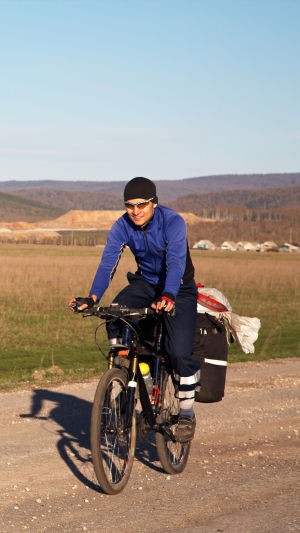Cycling is a healthy and eco-friendly way to travel, allowing you to fully enjoy the beauty of the journey.
With just a bike and a backpack, you can explore new places and experience the satisfaction of overcoming challenges along the way. However, cycling is not without its pros and cons. Let's take a closer look at the benefits and disadvantages of cycling.
Benefits of cycling:
1. Strengthens the heart
Cycling not only increases blood flow by using leg muscles to pump blood to organs, but it also strengthens the microvascular tissue that supports collateral circulation. Cycling can help prevent high blood pressure and diabetes, often more effective than medications.
2. Improves fitness
Cycling can prevent brain aging and improve the agility of the nervous system. It is a heterolateral dominant movement, meaning alternating between pedaling with the left and right leg can develop both sides of the brain simultaneously, preventing premature aging and paralysis.
Cycling can also improve cardiopulmonary function, exercise lower limb muscles, and enhance overall endurance. This exercise benefits not only joints and ligaments but also muscles throughout the body.
3. Promotes weight loss
Cycling is an aerobic exercise that burns calories, making it an effective way to lose weight.
4. Prolongs life
According to an international survey, postal workers have the longest life expectancy of any profession in the world, largely because they often ride bicycles when delivering mail.
5. Improves sleep quality
Although cycling can make you feel tired in the short term, it can also help you sleep better in the long run. Researchers at Stanford University School of Medicine found that insomniacs who cycled for 20-30 minutes a day took half as long to fall asleep and slept almost an hour longer.
6. Increases food intake
Physical exercise can help reduce the time food stays in the colon, making it easier to defecate.
Disadvantages of cycling:
1. Affects blood circulation
Riding a bike can compress the perineum, affecting local blood circulation and causing discomfort in the pubic area, which can lead to prostatitis.
2. Cause swelling in women
Women who ride bicycles for extended periods, especially when carrying heavy loads, are susceptible to developing groin swelling due to the wider female pelvis and the increased friction on the soft tissues.
3. Cause injury
Excessive cycling can cause damage to the cervical spine, lumbar spine, and knee joints, leading to painful symptoms primarily caused by poor posture.
How to mitigate the negative effects of cycling:
1. Adjust the seat height to reduce local friction, and use an elastic seat to prevent the hip from twisting around when cycling.
2. Change cycling posture regularly to prevent prolonged pressure on a single point in the perineum.
3. Gradually increase speed and time on a variable-speed bike to allow your body to adapt before pushing yourself too hard.
In conclusion, cycling is a great way to stay healthy and enjoy the outdoors. By understanding and addressing the potential drawbacks of cycling, you can maximize the benefits and make the most of your cycling experience.





